Each car has its own maintenance schedule and checkup requirements, but the following tips will apply regardless of what you’re driving. Whether you’re a professional mechanic, a hobbyist, a casual car owner or own a fleet, these are the things you need to do on a regular basis to ensure your ride is in good shape.
Rotate the Tires
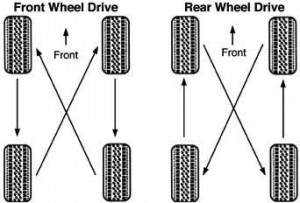 Your tires should be rotated every 5,000 miles and replaced every 40,000 miles to be safe, and make it a point to dust the brakes on a regular basis especially if you drive on dirty roads. Never let brake dust accumulate as it leads to road grime buildup and all sorts of problems. You can remove brake dust with a damp sponge and use as much cold water as is necessary.
Your tires should be rotated every 5,000 miles and replaced every 40,000 miles to be safe, and make it a point to dust the brakes on a regular basis especially if you drive on dirty roads. Never let brake dust accumulate as it leads to road grime buildup and all sorts of problems. You can remove brake dust with a damp sponge and use as much cold water as is necessary.
Check Tire Pressure
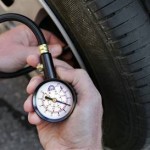 Tire pressure is very important because bad tires affect the car’s fuel economy and makes handling difficult. Check the tire pressure once a week and make sure it’s all right.
Tire pressure is very important because bad tires affect the car’s fuel economy and makes handling difficult. Check the tire pressure once a week and make sure it’s all right.
Engine Maintenance Tips
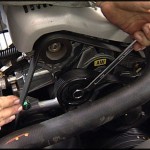 Look in front of the engine and you’ll see several drive belts looping around numerous pulleys that drive the a/c compressor, the alternator and other components. These are made of rubber and deteriorate over time especially when you drive in extreme conditions. To avoid problems, check the accessory drive belt and timing belt every 25,000 miles and replace them every 50,000 miles.
Look in front of the engine and you’ll see several drive belts looping around numerous pulleys that drive the a/c compressor, the alternator and other components. These are made of rubber and deteriorate over time especially when you drive in extreme conditions. To avoid problems, check the accessory drive belt and timing belt every 25,000 miles and replace them every 50,000 miles.
Check the Oil Level
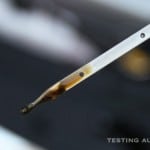 The oil level will tell you if the car needs more oil, and if it’s too low or high it could spell trouble for the engine. To check the oil level, park your car on an even terrain and give the engine time to cool down. Look for the dipstick, pull it out and after wiping it clean push the dipstick in until the top is in place.
The oil level will tell you if the car needs more oil, and if it’s too low or high it could spell trouble for the engine. To check the oil level, park your car on an even terrain and give the engine time to cool down. Look for the dipstick, pull it out and after wiping it clean push the dipstick in until the top is in place.
Wait a few seconds, pull it out and check where the oil is. If the oil is in the middle of the low and high marks your car is fine. The high and low marks by the way, are usually denoted by an “H” and “L” or a shaded part.
Examine the Coolant Level
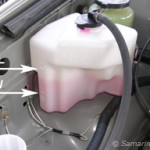 This is something that even a new car driver can do, although you’ll need to check your manual since its location varies from car to car. Usually though the coolant is at the side of the engine bay and in a semitransparent container or bottle. Park your car and wait for the engine to cool down before checking the coolant level. It should be between the “high” and “low” marks.
This is something that even a new car driver can do, although you’ll need to check your manual since its location varies from car to car. Usually though the coolant is at the side of the engine bay and in a semitransparent container or bottle. Park your car and wait for the engine to cool down before checking the coolant level. It should be between the “high” and “low” marks.
Weekly Car Wash Helps
 Washing your car once a week prevents dirt from accumulating and keeps corrosion away too. Don’t limit the cleaning to the exterior as the interior also needs tidying up, as dirt particles can build up in the seats and spilled drinks can cause corrosion. Use a vacuum cleaner to clean the interior and a damp cloth to wipe the lenses. You should also remove the mats and hose or brush them depending on how dirty it is. Do not put the mats back in the car until it has been thoroughly sun dried.
Washing your car once a week prevents dirt from accumulating and keeps corrosion away too. Don’t limit the cleaning to the exterior as the interior also needs tidying up, as dirt particles can build up in the seats and spilled drinks can cause corrosion. Use a vacuum cleaner to clean the interior and a damp cloth to wipe the lenses. You should also remove the mats and hose or brush them depending on how dirty it is. Do not put the mats back in the car until it has been thoroughly sun dried.
You may also wax the car on a regular basis as it protects the body paint by keeping oxidation to a minimum. In addition, wax acts as a barricade against pollution and bird droppings.
Drive Carefully
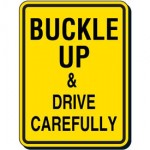 There’s no reason to accelerate the engine when you start up as it leads to engine wear and tear. Rather, it’s best to accelerate as you commence driving, and when you stop at the red light, shift to neutral to rest the engine.
There’s no reason to accelerate the engine when you start up as it leads to engine wear and tear. Rather, it’s best to accelerate as you commence driving, and when you stop at the red light, shift to neutral to rest the engine.

